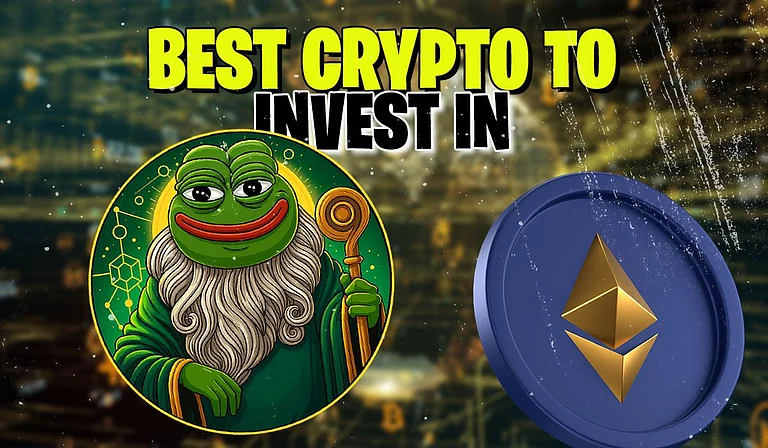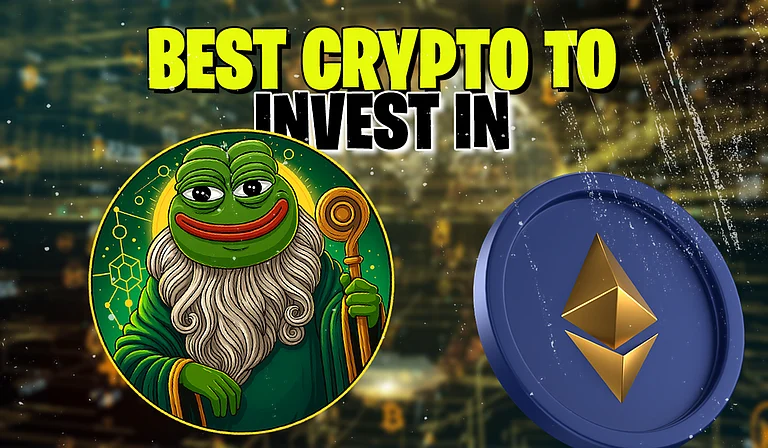The Ethereum Merge is one of the most notable events in the history of blockchain. It was the transition of Ethereum from a Proof-of-Work (PoW) consensus to a Proof-of-Stake (PoS) system — one that was intended to be more energy-efficient, scalable, and secure for the network. In September 2022, Ethereum's mainnet merged with the Beacon Chain, integrating Ethereum's current transaction layer with a new consensus layer fueled by staking rather than mining.
This incident — officially referred to as "The Merge" — was the culmination of years of research, experimentation, and community effort. But what astonished the international crypto community was how it was accomplished. No interruption, no data loss, and no impact on user activity. This piece delves into the technical, architectural, and operational nuances behind that smooth merge, dissecting how Ethereum's mainnet merged with the Beacon Chain without flinching.
Why Ethereum Needed the Merge
Before the Merge, Ethereum relied on Proof-of-Work, where miners used computing power to validate transactions and secure the network. While PoW provided strong security, it came with drawbacks:
High energy consumption
Limited scalability and slower transaction speeds
Centralization risks due to expensive mining hardware
Environmental concerns and regulatory scrutiny
In order to overcome these issues, Ethereum's developers scheduled a migration to Proof-of-Stake, where validators secure the network by locking up (staking) ETH rather than employing physical mining hardware. This process needed to happen in a careful dance of sorts — preserving Ethereum's current history and user base while altering its underlying consensus mechanism.
The Beacon Chain, brought online in December 2020, served as the platform for this change.
What is the Beacon Chain?
The Beacon Chain was the foundation of Ethereum's new consensus layer. It operated in parallel to mainnet for close to two years leading up to the Merge, quietly developing infrastructure required for PoS validation.
Major Beacon Chain functionalities:
Validator Management: Maintains all validators staking ETH (at least 32 ETH are required).
Block Finalization: Manages attestation and consensus between validators.
Randomness and Fairness: Applies cryptographic randomness to choose validators in a fair manner.
Slashing Mechanism: Punishes malicious or idle validators.
Epochs and Slots: Bins time into 12-second slots and 32-slot epochs for proposing blocks and finality.
Running in parallel with the PoW mainnet, the Beacon Chain enabled developers to experiment with staking and consensus mechanisms in safety before consolidating both chains. This cautious foundation was what enabled the ultimate Merge to occur — and easily.
How the Merge Occurred — Step by Step
The Merge was not a switch flip overnight but a multi-year effort carried out in deliberately designed phases.
This is how it played out:
Step 1: Launch of Beacon Chain (December 2020) as Ethereum's standalone PoS chain.
Step 2: Ongoing upgrades to the Beacon Chain (e.g., the Altair upgrade) to enhance stability and preparedness.
Step 3: Thorough testing across several testnets (Ropsten, Goerli, Sepolia) to mimic real-world environments.
Step 4: Clients of Ethereum mainnet were upgraded to be "Merge-ready," where they could switch from PoW to PoS once initiated.
Step 5: The terminal point — referred to as the Terminal Total Difficulty (TTD) — was achieved at block number 15,537,393 on September 15, 2022. At this time, Ethereum's PoW mechanism ceased creating blocks permanently.
Step 6: The Beacon Chain immediately assumed the role of the consensus layer, confirming blocks produced by staked validators as opposed to miners.
After that, mainnet assumed the execution layer (executing smart contracts and transactions), whereas Beacon Chain assumed the consensus layer (securing and confirming blocks).
For users, this was the stunning aspect — nothing was done manually. Wallets, smart contracts, and funds were left intact. The Merge was transparent to the majority of users but gargantuan for the network.
Pre-Merge vs Post-Merge: A Comparison
Feature | Pre-Merge (Proof-of-Work) | Post-Merge (Proof-of-Stake with Beacon Chain) |
Consensus Mechanism | Mining through computational puzzles | Staking ETH to validate blocks |
Network Structure | Combined execution and consensus | Separated execution (Mainnet) and consensus (Beacon Chain) |
Energy Consumption | Extremely high (GPU/ASIC mining) | Reduced by over 99% |
Validator Requirements | Expensive mining hardware | 32 ETH stake (can use staking pools) |
Why the Merge Was So Smooth
This transition could have failed in so many different ways — but it didn't. Here's why the Merge went off without a hitch:
A. Parallel Testing and Deployment
Ethereum developers spent almost two years operating the Beacon Chain on its own. This tested validator behavior, block finalization, and reward distribution without any impact on the live network.
B. Strong Infrastructure and Coordination
Every Ethereum client — including Geth, Prysm, Lighthouse, and Teku — was upgraded in coordination. Exchanges, DeFi platforms, and dApps were notified well ahead of time, so the ecosystem could prepare.
C. No Loss of Data or Transactions
The Merge retained Ethereum's complete historical record. All transactions, balances, and contracts up to the PoW period are intact. This guaranteed full continuity and zero possibility of data fragmentation.
D. Gradual Activation
Rather than calling for a date, Ethereum employed the use of the TTD mechanism, which activated the Merge when the network had achieved a certain cumulative difficulty point. This avoided timing mistakes and enabled automatic, natural switching.
E. Community and Developer Support
Thousands of developers, node runners, and researchers worked together worldwide, running every possible failure test prior to launch.
The Benefits and the Trade-Offs
Key Benefits of the Merge
Tremendous Energy Reduction: Ethereum's energy consumption fell by more than 99%, mitigating environmental issues and earning institutional investment.
Improved Security: Staked ETH serves as collateral, lowering incentives for attacks and making validator interests align with network health.
Scalability Foundation: The Merge laid the foundation for upcoming updates such as sharding and rollups, which will enhance velocity and reduce fees.
Sustainability: PoS is significantly more environmentally friendly and harmonious with future regulatory requirements.
Network Continuity: No disruption was felt by users — balances, contracts, and apps operated uninterrupted.
Considerations and Challenges
Staking Barrier: A 32 ETH minimum stake is too high for retail users, although staking pools minimize this barrier.
Centralization Risks: Large staking providers or exchanges might end up holding huge proportions of staked ETH.
Slashing Risks: Validators risk penalties for downtime or even malicious behavior.
Deferred Scalability: The Merge itself didn't make transactions cheaper or quicker — that will arrive with later upgrades such as The Surge and The Verge.
The Road Ahead for Ethereum
The Merge was just the opening salvo in Ethereum's long-term plan. Creator Vitalik Buterin has described future phases towards further optimization:
The Surge: Adding sharding and rollup improvements for scale.
The Verge: Adding Verkle Trees to make node operations more streamlined.
The Purge: Simplifying network data for performance.
The Splurge: Final polishing and sundry improvements.
In combination, these improvements seek to make Ethereum quicker, lighter, and more usable — the building blocks of a completely decentralized global ecosystem.
Conclusion
The Merge was not just a technical upgrade — it was a historic transformation for blockchain technology. With the successful merge of the Ethereum mainnet with the Beacon Chain, Ethereum became a more sustainable, secure, and future-proof network without losing users or compromising its extensive history of data and innovation.
This smooth implementation testified to what decades of decentralized co-ordination can do. It created a new benchmark for blockchain upgrades — one that harmonizes innovation with stability.
Ethereum's journey does not stop here. With PoS securely established, it now looks toward more scalability, sustainability, and inclusivity — paving the way for the future of decentralized finance and digital ecosystems.
Frequently Asked Questions (FAQs)
Q1. What exactly was “The Merge”?
The Merge refers to the event where Ethereum’s mainnet merged with the Beacon Chain, replacing its Proof-of-Work consensus with Proof-of-Stake — making the network more energy-efficient and sustainable.
Q2. Did I need to do anything with my ETH during the Merge?
No. The process was entirely automatic. Your ETH, wallet balances, and smart contracts remained exactly as before.
Q3. When did the Merge happen?
The Merge occurred on September 15, 2022, at block 15,537,393.
Q4. What happened to Ethereum miners?
Mining on Ethereum ceased after the Merge. Some miners migrated to other PoW chains, while others became validators or joined staking pools.
Q5. Does the Beacon Chain process transactions?
Not directly. The Beacon Chain is the consensus layer, responsible for validation and finality, while the mainnet remains the execution layer handling transactions and smart contracts.
Q6. Did the Merge reduce gas fees?
Not immediately. The Merge focused on changing consensus, not transaction throughput. Gas fees and speed improvements are expected in future upgrades.
Q7. What’s next after the Merge?
Ethereum will continue evolving with stages like The Surge (sharding) and The Verge (data structure optimization) to increase speed and scalability.

























